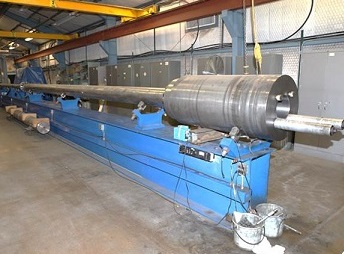The STAR facility, within Sandia’s Solid Dynamic Physics Department, is one of a few institutions in the world with a major shock-physics program. This is the only experimental test facility in the world that can cover the full range of pressure (bars to multi-Mbar) for material property study utilizing gas/propellant launchers, ramp-loading pulsers, and ballistic applications.
Material Characterization
Shock wave experiments are an established technique to determine the equation of state at high pressures and temperature, which can be applied to virtually all materials. This technique allows the probing of the internal structure of the material as it undergoes deformation. This provides a better understanding of the material properties for development and the refining of material models and helping to develop new materials. We provide nearly a half-century of experience in material characterization and are one of the leaders in shock-wave studies.
How does STAR work?
A typical STAR shot consists of a projectile with an impactor on the front surface being launched, by either propellant or compressed gas, down the gun barrel. The impactor hits a target sample, usually a solid or granular material, which is mounted in a target holder. The debris from the high speed projectile/impactor/target collision is contained in a catcher tank. Diagnostics collected characterize the impact and the material response. The catcher tanks are sized to hold material to slow down and then stop the debris. The material ranges from parachute fabric to honeycomb material to thick steel plates, depending on the gun.
Ballistic Studies
The STAR facility is the only facility in the world where the breadth of ballistic studies can be performed; from conventional arms (penetration), fragmentation events, space impact events (micrometeoroid impacts), and extreme velocity impacts of space dust while utilizing state-of-the-art diagnostics.
Studies include:
- Utilizing two-stage light gas gun and range for investigations into material fragmentation, spacecraft studies, and code validations on scaled targets.
- Validation experiments can be performed with virtually any geometric shape impactor
- Impacts up to 19 km/s for space applications: micrometeoroid, space junk, etc.
- Sandia is the only institution that incorporated low-pressure target chambers for hypervelocity impacts exceeding 10 km/s
- Radiography, photography, velocimetry and interferometry
Laboratory Test Launchers

STAR houses a collection of five laboratory test launchers (guns) in four gun bays for Dynamic Material Property studies and a small machine shop. The guns are either propellant driven or compressed gas driven systems. STAR also has a multiple array of small caliber arms. Conventional velocities are used to study construct penetration, body armor resistance and code validation. Learn more…